
Prologue: The Queen of Mystery
On a small desk, an old, worn notebook lies open.
On the pages of the notebook, bold handwriting fills the space with notes and sketches, capturing the ideas that continuously blossom within her mind.
Among them are the early prototypes of characters who would later become the famous detectives Poirot and Marple, standing silently, their forms not yet fully defined.
This notebook is no ordinary notebook.
It is the beginning of countless stories woven by a single woman, as well as a record of her own life.
Agatha Christie.
Most people know her name.
The Queen of Detective Fiction, a legendary author whose works have sold over 2 billion copies worldwide.
These titles are but a small reflection of what she achieved.
Yet, her own life is also filled with mysteries waiting to be unraveled.
- A childhood marked by dramatic change after the death of her father, despite being born into a wealthy family.
- The youthful days when her dream of becoming a musician was shattered.
- The knowledge of poisons she acquired during wartime.
- The mysterious disappearance in which she herself vanished.
Her story is filled with surprises and mysteries, much like one of her own detective novels.
How did she rise to become the Queen of Mystery throughout her life?
What was it that drove her forward?
She once said:
“Life itself is a mystery.”
This is the story that unravels the mystery of her life.
Chapter 1: Childhood – Where the Seeds of Stories Began to Sprout
On September 15, 1890, Agatha Mary Clarissa Miller was born in Torquay, Devon, England.
Surrounded by lush gardens at the Ashfield estate, she spent a happy childhood alongside her siblings.
Her mother, Clara, was an eccentric yet loving educator.
She firmly believed that “children should not learn to read or write before the age of eight” and refused to send her daughter to school.
However, young Agatha secretly took books from her mother’s bookshelf and taught herself to read.
By the age of five, despite her mother’s objections, she became engrossed in reading books.
In 1895, in Torquay, Devon.
The expansive garden of Ashfield, bathed in the gentle sunlight of a summer day.
Green lawns and vibrant flowers stretch across the landscape, while a gentle breeze rustles through the trees.
There, a small girl sat quietly on the ground.
Her golden curls swayed in the breeze, and her profile was fixed in a serious gaze at something before her.
Mother:
“Agatha, what are you doing?”
Agatha Christie:
“The fairies are here, Mama”
“I can see them dancing among the flowers”
Mother:
“Agatha, boredom is important.”
“It’s when you’re bored that your mind begins to create something.”
Agatha Christie:
“I’m not bored at all!”
“I’ll write a story about the fairies!”
In that moment, Clara smiled inwardly and nodded.
No one yet knew what kind of future this child would create.
Yet, the words spoken in this garden would become the first step in her journey of creation.
Chapter 2: The Death of Her Father
Her father, Frederick, was a gentle and generous man, an ideal figure in Agatha’s eyes.
However, in 1901, he suddenly passed away from a heart attack.
This event brought profound sorrow to the family and caused significant financial difficulties.
With the upkeep of the estate in jeopardy, Agatha faced her first life trial—the experience of her stability unraveling.
Agatha Christie:
“What will happen to our family now that Father is gone?”
Mother:
“It’s all right, we have our stories, don’t we?”
“Agatha, a family is like a story.”
“There are sad chapters, but there are also ones filled with hope.”
“As long as we keep weaving our story, we’ll be all right.”
These words would later become a source of comfort for Agatha.
Hearing those words, Agatha, though carrying the sorrow of her father’s death in her heart, resolved to create new stories.
Chapter 3: Studying in Paris and Pursuing Music and Literature
At 16, Agatha Christie was flourishing at a boarding school in Paris, where her exceptional talents began to shine.
The beautiful sound of the piano resonated through the music room.
Her fingers danced effortlessly across the keys, captivating everyone in the room.
Teacher:
“Truly remarkable skill, Agatha.”
When the teacher offered this praise, she responded with a modest smile.
Her talent shone not only in piano but also in vocal performance.
Her clear, resonant voice touched the hearts of those who heard it, hinting at the promise of a successful future.
However, she faced a wall she could not overcome.
She was confronted with the daunting obstacle of stage fright.
Despite her skill, her delicate nature betrayed her, and the fear of performing in front of an audience overwhelmed her.
As the day of her big performance approached, she felt increasingly crushed by anxiety.
In the dressing room, she couldn’t stop her hands from trembling, and the pounding of her heart like a drum backstage became unbearable.
Agatha Christie:
“Performing in front of people is just too frightening…”
One night, with tears in her eyes, she confided in her mother, Clara.
Clara gently placed a hand on her shoulder and quietly listened.
Agatha Christie:
“In the practice room, everything is perfect, but on stage, my fingers just won’t move…”
With tears streaming down her face, Agatha confessed to her mother.
Her voice carried the weight of a deep longing to live as a musician and the inner turmoil of fear that stood in her way.
Overwhelmed by the fear of performing on stage and extreme anxiety, she decided to abandon her path as a musician.
However, this experience prompted her to consider “a new path beyond failure.”
Through this experience, she began to search for a path that suited her personality.
Around the same time, she became captivated by detective novels, particularly those featuring Sherlock Holmes.
Inspired by the structure of stories where brilliant detectives solve mysteries, she began attempting to write her own tales.
This became the catalyst for her to focus on the craft of “creation.”
Chapter 4: War and Marriage
In 1914, the First World War broke out.
The young Agatha fell in love with Archibald Christie, a Royal Air Force pilot she met in social circles.
The Man:
“May I have this dance?”
Agatha Christie:
“I’m not very good at it, but…”
The man:
“Then I’ll lead.”
“Just follow my steps.”
From that night on, the two grew rapidly closer and eventually married.
During the war, her husband was deployed to the front lines, while Agatha worked as a pharmacy assistant at a local hospital, waiting anxiously for Archie’s return.
Through this job, she gained extensive knowledge of poisons and pharmaceuticals, which would later prove invaluable in her writing career.
Co-worker:
“Agatha, are you studying poisons again today?”
Agatha Christie:
“Yes, it might come in handy someday, don’t you think?”
“If I create a murder case involving poison, readers are sure to be astonished.”
As an unknown writer, Agatha began jotting down her ideas in a notebook.
Observing People at the Pharmacy
Agatha observed a variety of people from behind the pharmacy counter.
During the war, wounded soldiers and anxious families visited, seeking medicine.
Customer:
“Is this medicine safe?”
Some would nervously ask, while others said nothing, their trembling hands silently accepting the medicine.
Agatha carefully observed their expressions and gestures.
Agatha Christie:
“People tend to hide what they truly fear from their faces.”
This realization greatly contributed to the development of her character in the years to come.
Not only did her knowledge of poisons grow, but her experiences at the pharmacy also brought depth and realism to the portrayal of human nature in her detective novels.
Chapter 5: The Birth of Poirot
As the war came to an end, Agatha was having tea with her sister, Madge.
Madge:
“Agatha, do you think you can write a detective novel?”
Agatha Christie:
“Of course, I can write one!”
“I’m sure the protagonist will be a detective from Belgium.”
“Meticulous and sharp-witted”
Madge:
“And his name?”
Agatha Christie:
“Hercule Poirot”
The moment she said it, the image of a small Belgian detective came to life in her mind, moving vividly and with purpose.
With careful precision, Agatha completed her debut novel, The Mysterious Affair at Styles.
In this work, she introduced her Belgian detective, Hercule Poirot, whose sharp reasoning skills led to the resolution of the case.
📖The Mysterious Affair at Styles
Agatha Christie’s debut novel and the first appearance of the legendary detective Hercule Poirot.
🖊️Synopsis
During World War I, in the countryside of England, a wealthy elderly woman, Emily Inglethorp, is poisoned in her mansion, Styles Court.
Captain Hastings, who was staying at the mansion, enlists the help of his friend, Hercule Poirot, to investigate.
Poirot employs his sharp observation and deductive skills to unravel the complex relationships among the family and household members,
uncover hidden motives, and solve the ingenious crime, ultimately identifying the true culprit.
This work showcases Christie’s signature elements, including a locked-room mystery, a poisoning case,
and Poirot’s brilliant deductions using his “little grey cells,” providing readers with ample enjoyment.
Additionally, its clever plot and unexpected conclusion have earned it recognition as an early masterpiece.
In 1920, this work was published, marking the beginning of Agatha’s illustrious writing career.
Chapter 6: The Birth of Miss Marple
In the winter of 1926, Agatha sat alone in her quiet study, deep in thought.
Unlike the time when Poirot was born out of a conversation with her sister Madge,
this time she felt a strong desire to create a character who was more relatable and approachable.
Agatha Christie:
“A detective doesn’t necessarily have to be a man, does it?”
Agatha opened a small notebook and sank into deep thought.
Agatha Christie:
“And the power of deduction isn’t just about experience or knowledge.”
“With keen observation and the ability to understand human relationships…”
What came to Agatha’s mind was a modest and unassuming elderly woman living in a quiet country village.
Her face was always calm and kind, but her eyes shone with a sharpness that seemed to see through everything.
Agatha Christie:
“Her name is… Miss Jane Marple”
At that moment, Agatha’s pen began to move.
Miss Marple’s village life, her hobby of knitting, and her unexpectedly sharp insight began to take shape on the page.
Agatha drew upon memories from her own childhood and the influence of sharp-eyed women she had encountered,
weaving these elements together to create the character of Miss Marple.
🖊️The Inspiration Behind Miss Marple
Agatha recalled her grandmother and the village where she had lived while creating this character.
Agatha Christie:
“Miss Marple is a combination of the women I knew.”
Agatha later reflected.
Agatha Christie:
“They appeared quiet and harmless, but behind that exterior lay sharp minds capable of uncovering the truth in any situation.”
Thus, Miss Marple was born and made her first appearance in the 1927 short story The Tuesday Night Club (also known as The House of the Safe).
📖The Tuesday Night Club
(The House of the Safe)
It is the short story where Miss Marple made her first appearance.
Published in 1927, it is included in the short story collection The Thirteen Problems (The Tuesday Night Club).
The story unfolds in a format where six people, gathered on a Tuesday night, share mysteries they know and attempt to solve them.
Among them, Miss Marple draws on her village experiences to brilliantly unravel the mystery.
This story marks the first time Miss Marple’s sharp observational skills and deep understanding of human nature are showcased to readers,
laying the foundation for the subsequent series.
🖋️Reader Reactions
Miss Marple’s keen insight and the dark mysteries hidden within the peaceful countryside quickly captivated readers.
Encouraged by the success of the short stories, Agatha decided to write a full-length novel featuring Miss Marple as the protagonist.
In 1930, The Murder at the Vicarage, which marked Miss Marple’s significant debut, was published to great acclaim.
Agatha Christie:
“Unlike Poirot, she has a charm unique to the countryside.”
“But her ability to solve cases is in no way inferior to Poirot’s.”
The Relationship Between Miss Marple and Agatha Christie
Miss Marple became a special figure for Agatha.
Through her stories, Agatha conveyed the depth of human observation and the importance of not being deceived by appearances.
Chapter 7: The Disappearance
In 1926, a dark shadow fell over Agatha’s life.
Her mother, Clara, passed away, and to make matters worse, her husband, Archie, confessed to an affair and demanded a divorce.
One night, she left her home, leaving behind a letter.
Physically and emotionally overwhelmed, she abruptly abandoned her home one night and disappeared.
Later, her car was found abandoned near a lake, but there was no trace of her whereabouts.
Later, her car was found abandoned near a lake, but there was no trace of her whereabouts.
This incident shocked the entire nation, prompting a nationwide search.
Eleven days later, she was found at a hotel in Yorkshire, claiming amnesia and revealing nothing about the circumstances of her disappearance.
Agatha Christie:
“I don’t remember. Anything…”
Was there truth in her claim of “losing her memory,” or was she hiding something?
That remains a mystery to this day.
Various speculations surrounded the background of this disappearance, but Agatha herself remained silent about it for the rest of her life.
The greatest mystery of her life was one she never solved herself.
📰Reactions Following the Incident
The day after Agatha was discovered at the Yorkshire hotel, newspapers across Britain widely reported on the incident.
Headlines such as “Mystery Writer Creates the Greatest Mystery Herself” dominated the news,
and many people spoke of the event with a mix of surprise and excitement.
However, Agatha herself remained silent on the matter.
Instead, she immersed herself in writing her next work.
Agatha Christie:
“No matter what the world says, I have work to do.”
She said this to her husband, Max, and retreated to her study.
🖊️The Impact on Her Writing
The impact of this event on her creative work was immeasurable.
The theme of disappearance, in particular, became a significant element in several of her later works.
Her experience with disappearance cast a shadow over her later works.
In And Then There Were None, the theme is reflected in the isolated island where people vanish one by one,
and in Why Didn’t They Ask Evans? through characters who mysteriously disappear.
These works seemed to quietly carry her unspoken thoughts and experiences.
👤And Then There Were None
Agatha Christie’s masterpiece and one of the best-selling mystery novels of all time.
🖊️Synopsis
Ten men and women invited to a remote island discover that their mysterious host intends to expose their past crimes and has summoned them to the island to face judgment for those sins.
One by one, they are killed in accordance with the lyrics of the nursery rhyme “Ten Little Soldiers.”
Trapped on the island with no means of escape, the characters grow increasingly desperate as they search for the killer while confronting their own fates.
And in the end, no one is left on the island.
🖊️Features
- The unique tension of being trapped on an inescapable island where individuals are killed one by one.
- The characters are gradually cornered, descending into paranoia driven by fear and guilt.
- The surprising identity of the culprit and the ingenious tricks that astonish many readers.
- An immortal masterpiece that continues to have a significant influence on modern detective fiction.
📖Why Didn’t They Ask Evans?
A detective novel blending Agatha Christie’s humor and thrill, published in 1934.
🖊️Synopsis
Near a golf course in Wales, a young man named Bobby Jones discovers a dying man who has fallen off a cliff.
With his last breath, the man utters the cryptic words, “Why didn’t they ask Evans?” before passing away.
To uncover the truth behind this suspicious death, Bobby and his childhood friend Frankie take on the challenge of solving the mystery.
🖊️Features
- The humorous and quick-witted exchanges between Bobby and Frankie add to the charm of the story.
- In addition to the mystery-solving, the story incorporates elements of adventure and friendship, making it highly entertaining.
- The simple yet profound question, “Who is Evans?” draws readers into the story.
- The story masterfully weaves clues and tricks leading up to the truth, with a final twist that astonishes readers.
Chapter 8: Remarriage and the Middle East
In 1930, Agatha remarried archaeologist Max Mallowan.
Her marriage to a husband 14 years her junior was a source of great happiness,
and she accompanied him to excavation sites in the Middle East,
where she was captivated by the allure of ancient ruins.
The desert landscapes and foreign cultures she encountered there provided fresh inspiration for her writing.
Agatha Christie:
“Max, look at those ruins”
“It’s as if they’re guarding ancient secrets.”
Max Mallowan:
“I think the secrets you write about are far more intriguing.”
True to his words, works set in exotic locations, such as Murder in Mesopotamia and Appointment with Death, were created one after another.
📖Murder in Mesopotamia
A mystery novel by Agatha Christie featuring the famous detective Hercule Poirot, published in 1936.
🖊️Synopsis
At an archaeological excavation site in the Middle East, Louise, the wife of the expedition leader, dies under mysterious circumstances.
A terrifying secret from her past may have been the cause of her untimely death.
Poirot is invited to the scene, where he investigates the members of the excavation team and their intricate relationships to uncover the truth.
🖊️Features
・Set against the exotic backdrop of a Middle Eastern excavation site, the story weaves Christie’s signature clever tricks and gripping tension throughout.
・The culprit is unexpected, and the psychological motives and their background hold the key to the story.
・The realistic setting, inspired by Agatha’s own experiences on archaeological journeys, adds to the novel’s allure.
📖Appointment with Death
A mystery novel by Agatha Christie featuring the famous detective Hercule Poirot, published in 1938.
🖊️Synopsis
While traveling through the Petra ruins in the Middle East, a controlling matriarch, Mrs. Boynton, is found dead.
Every family member harbors resentment toward her, making them all suspects. Poirot delves into the truth by analyzing testimonies from the family and other travelers.
🖊️Features
・The exotic setting of the Petra ruins adds a unique atmosphere to the story.
・The psychological conflicts within the family and the complexity of their relationships are masterfully portrayed.
・Poirot’s sharp insight and his ability to delve into human psychology are highlights of the story.
Chapter 9: The Golden Age – The Orient Express and Worldwide Success
In 1934, Agatha Christie was once again embarking on a new challenge.
Agatha Christie:
🖊️Features
・A masterpiece of the locked-room mystery: Within the confined space of the train, the lies and secrets of the colorful passengers are gradually uncovered.
・The allure of psychological warfare: At the heart of the story lies the intense psychological battle between the brilliant detective Hercule Poirot and the suspects as he searches for the culprit.
・A shocking conclusion: The identity of the culprit, combined with cleverly devised tricks and an unexpected ending, leaves readers astonished.
・A cast of international characters: Passengers from diverse nationalities and backgrounds add depth and richness to the story.
・Murder on the Orient Express is a masterpiece that seamlessly blends intricate mystery-solving with compelling human drama.
On January 11, 1976, Agatha sat in her favorite chair as usual, a cup of tea in hand.
Agatha Christie:
🖊️Features
- The tension of a locked-room drama and the psychological depth of the characters are the highlights.
- Agatha Christie’s signature unexpected ending leaves the audience astonished.
- A landmark in theatrical history, it stands as an iconic symbol of British culture.
The Mousetrap remains an immortal masterpiece, continuing to captivate audiences around the world to this day.
Audience:
“Who could have predicted such an ending!”
Queen Elizabeth II:
Max:
Agatha Christie:
Journalist:
“Agatha, what’s the reason you’ve been able to continue for so long?”
A journalist inquired.
Agatha Christie:
“Life itself is a mystery.”
“That’s why there’s no reason to stop writing stories.”
Chapter 11: Finale – The Last Days of the Queen of Mystery
The influence of her works on future generations.
In the autumn of 1975, Agatha sat in her home study, holding a bundle of fan letters.
Among them were letters from young writers.
Agatha Christie:
“Reading your works has given me the courage to write my own stories.”
Agatha smiled as she continued reading the letters.
She felt a warm sense of fulfillment, realizing that her works were inspiring a new generation of writers and readers.
“‘Why do you write about something as dreadful as murder?'”
She let out a quiet sigh.
🖊️The Final Night
On January 11, 1976, Agatha sat in her favorite chair as usual, a cup of tea in hand.
Amid the silence that followed, it felt as though her stories were still continuing.
Epilogue: A Story That Lives On Forever
The next morning, Agatha passed away peacefully.

In 1976, when Agatha Christie passed away, her stories had already spread across the globe, being passed on to new generations.
Let’s uncover the past together!
If you found this article insightful, please consider supporting me on a cup of coffee!👈Click☕🙏
Author: Fuji


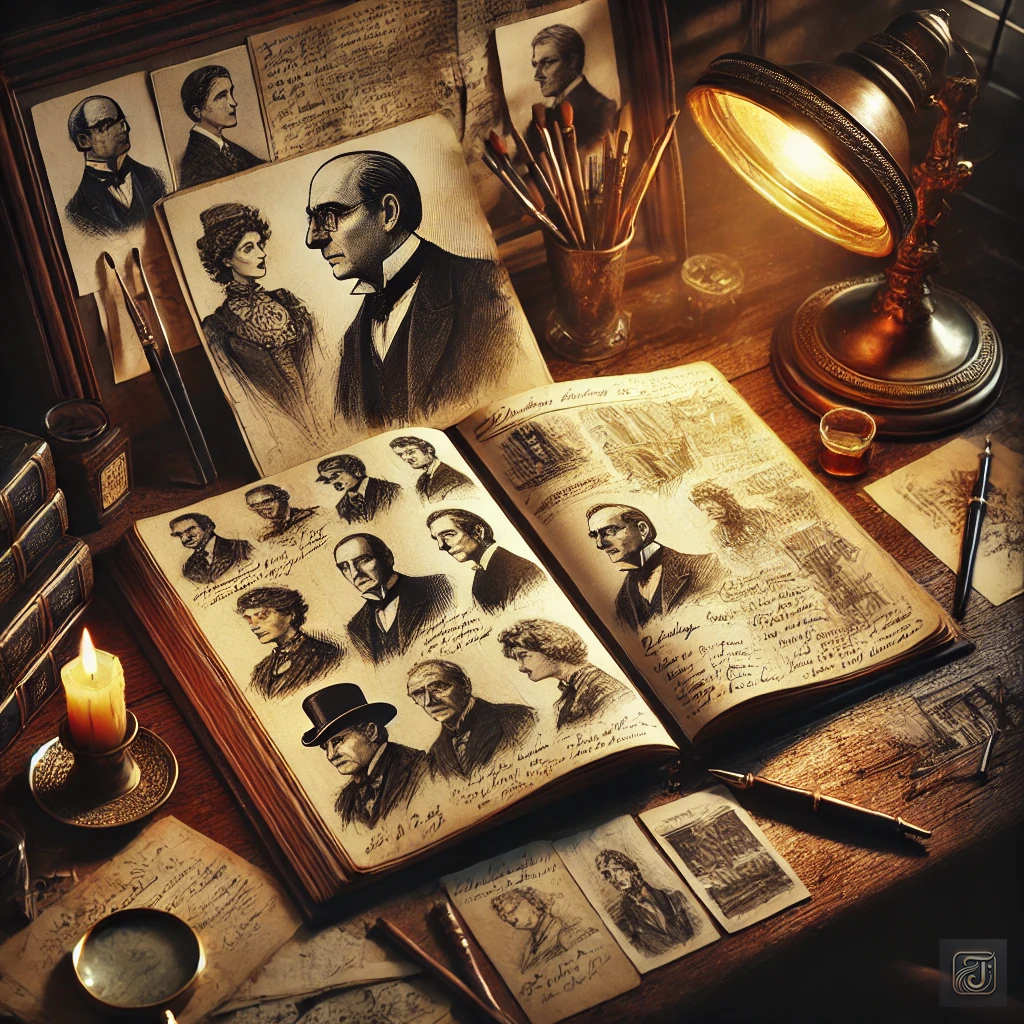

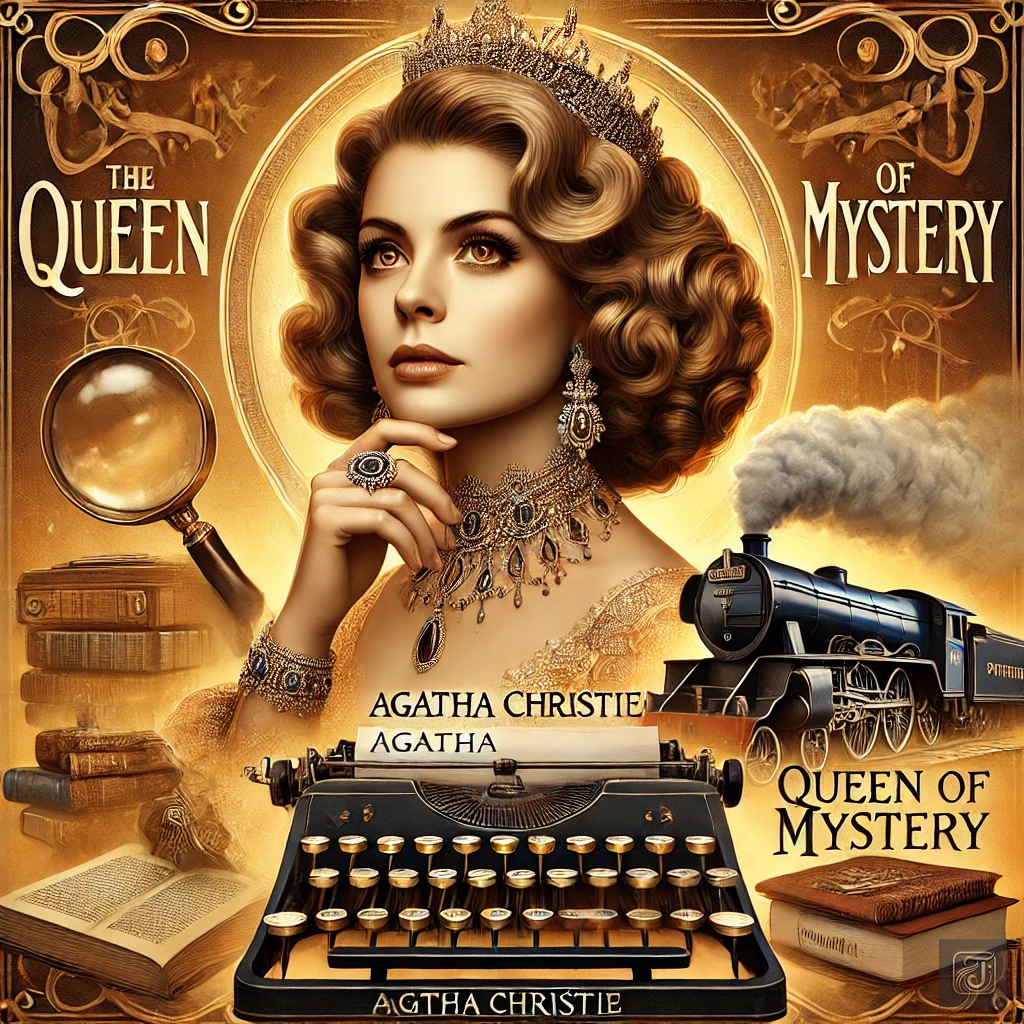




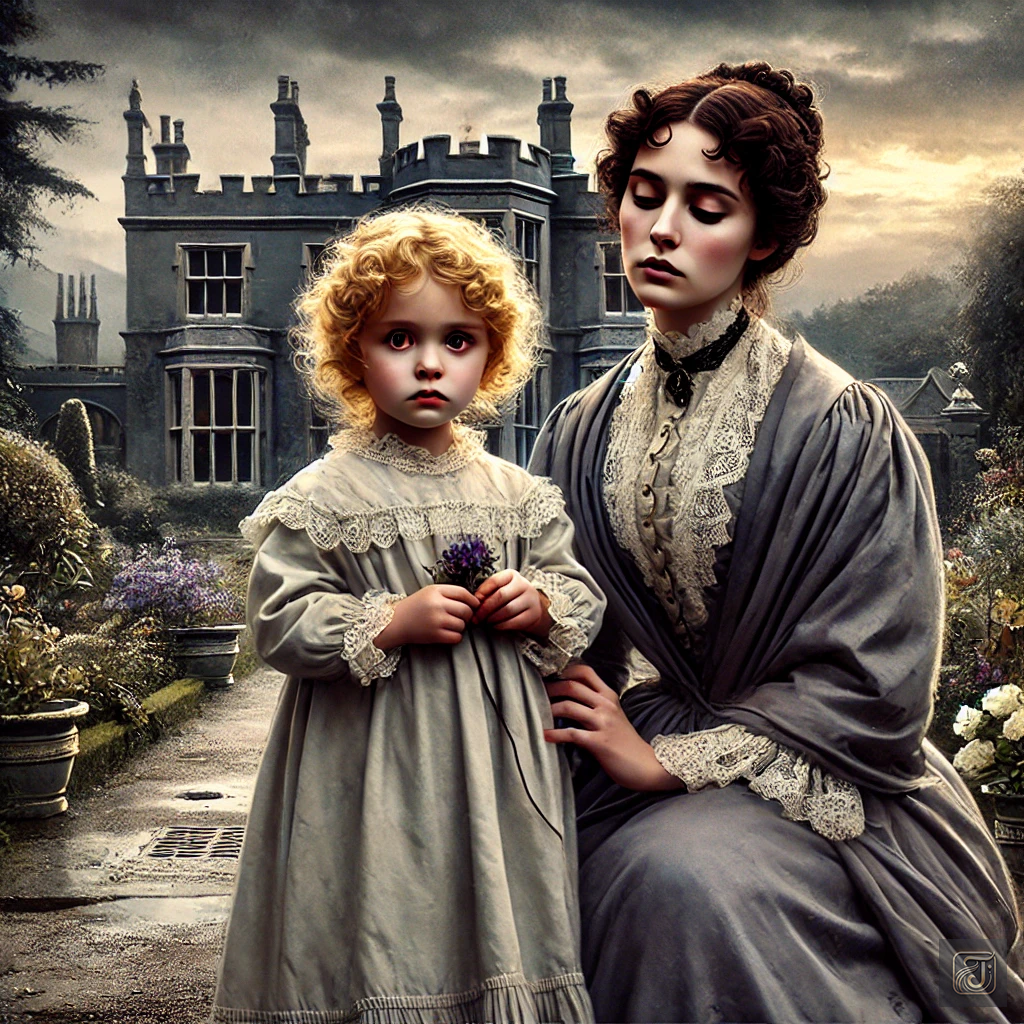
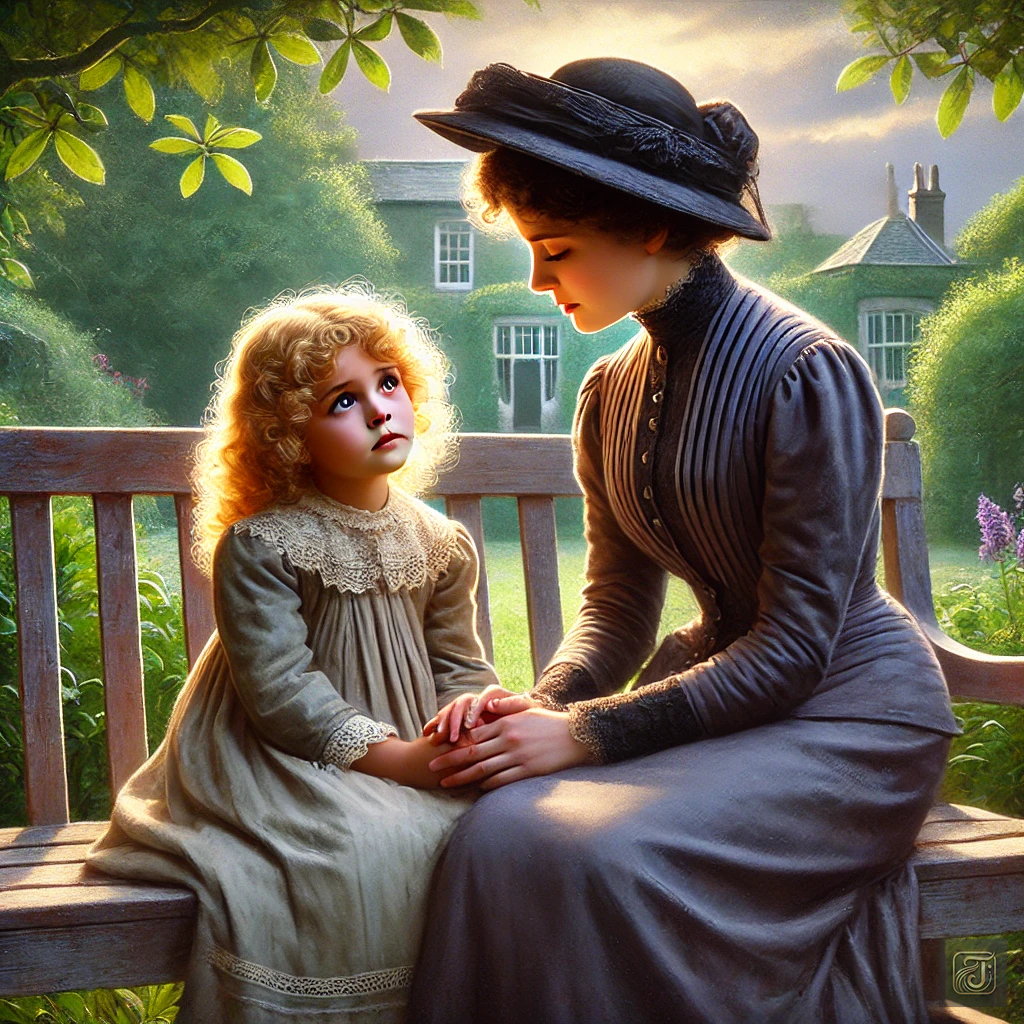



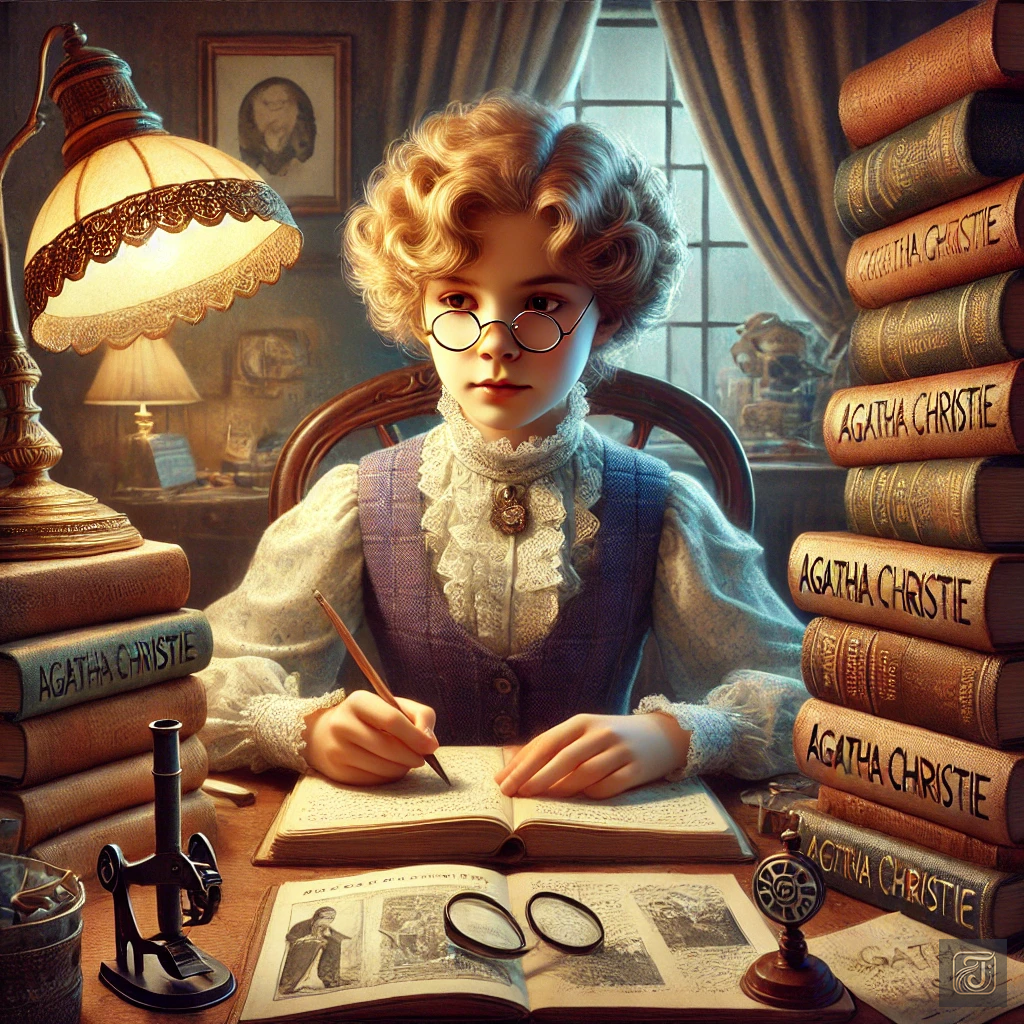

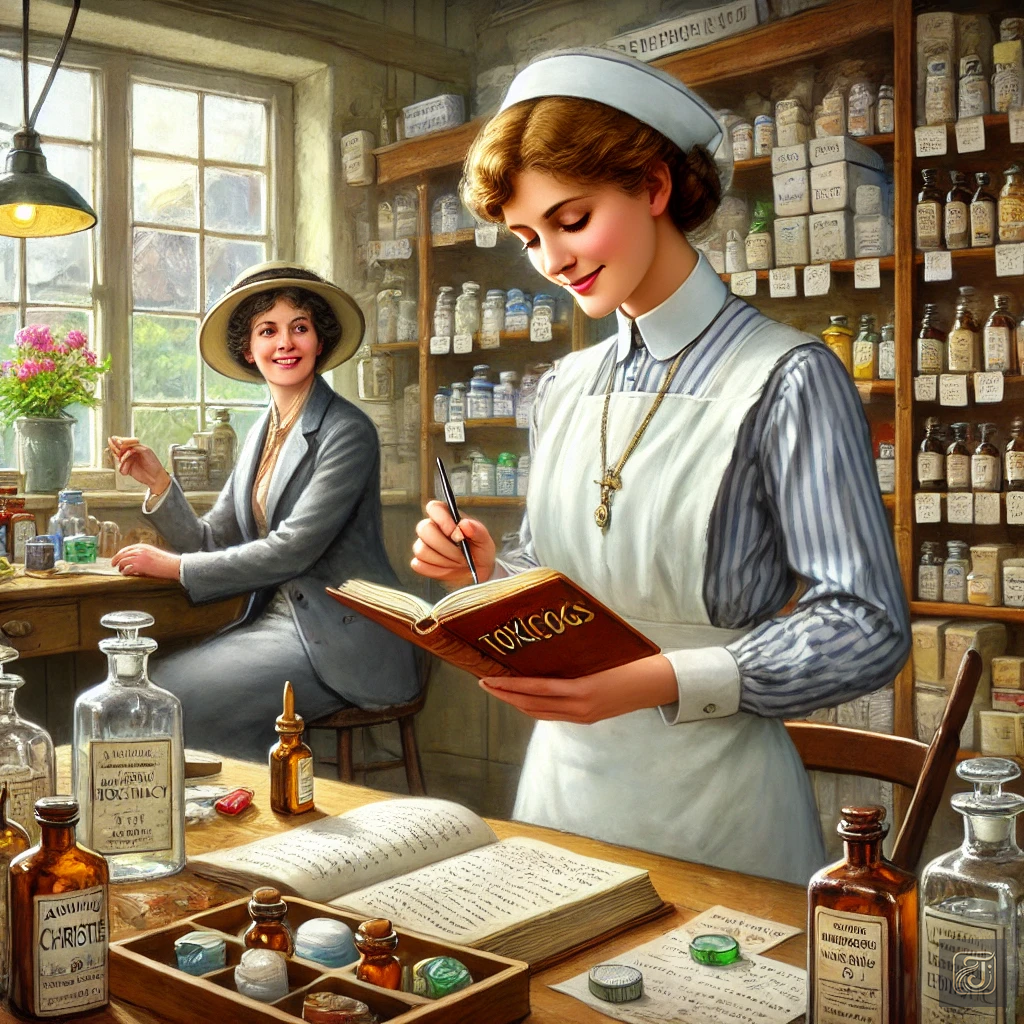
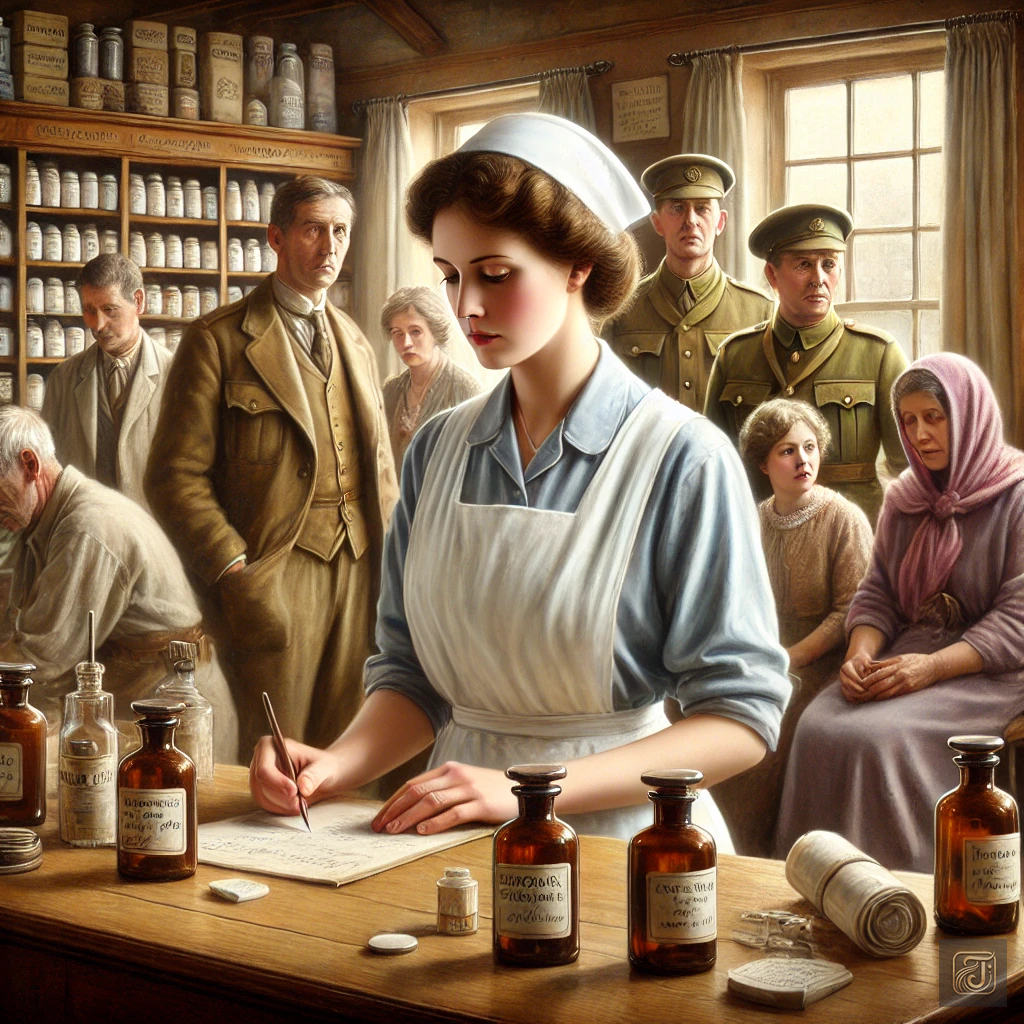

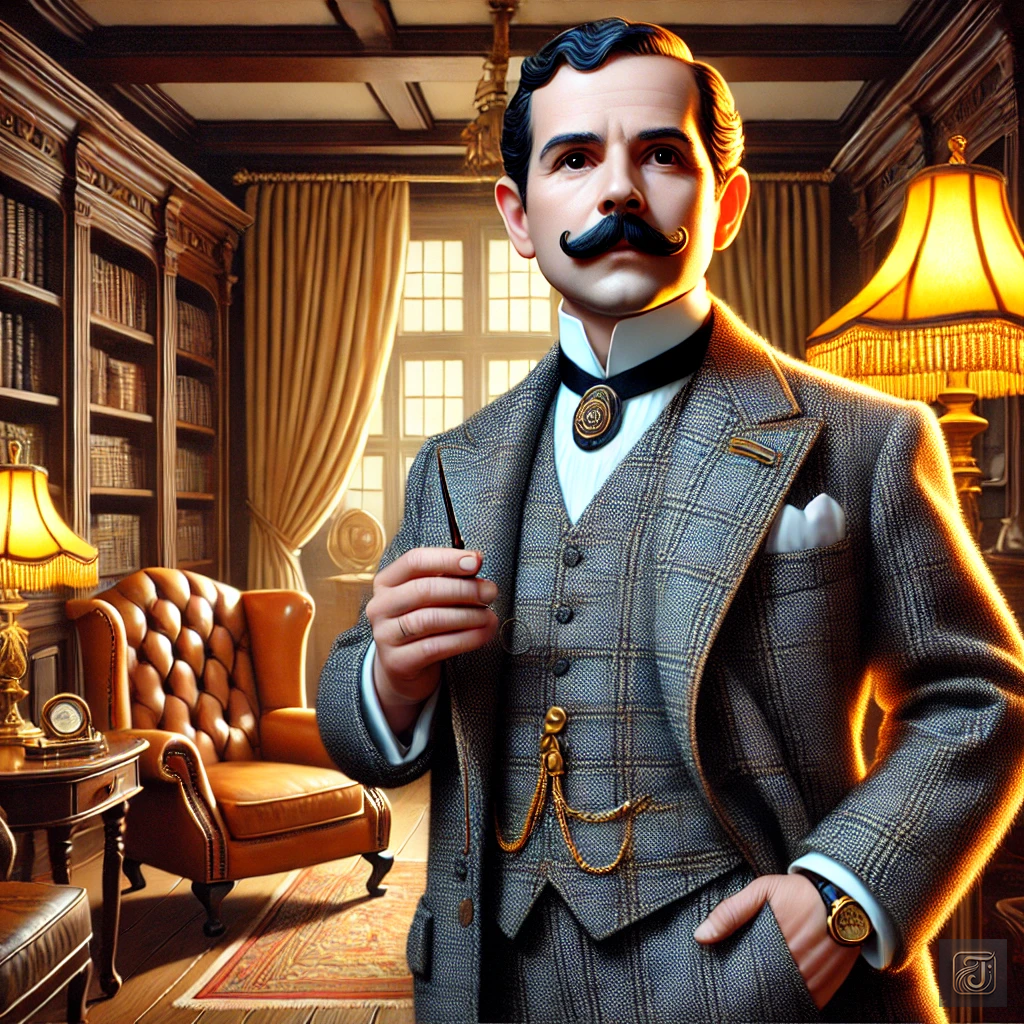



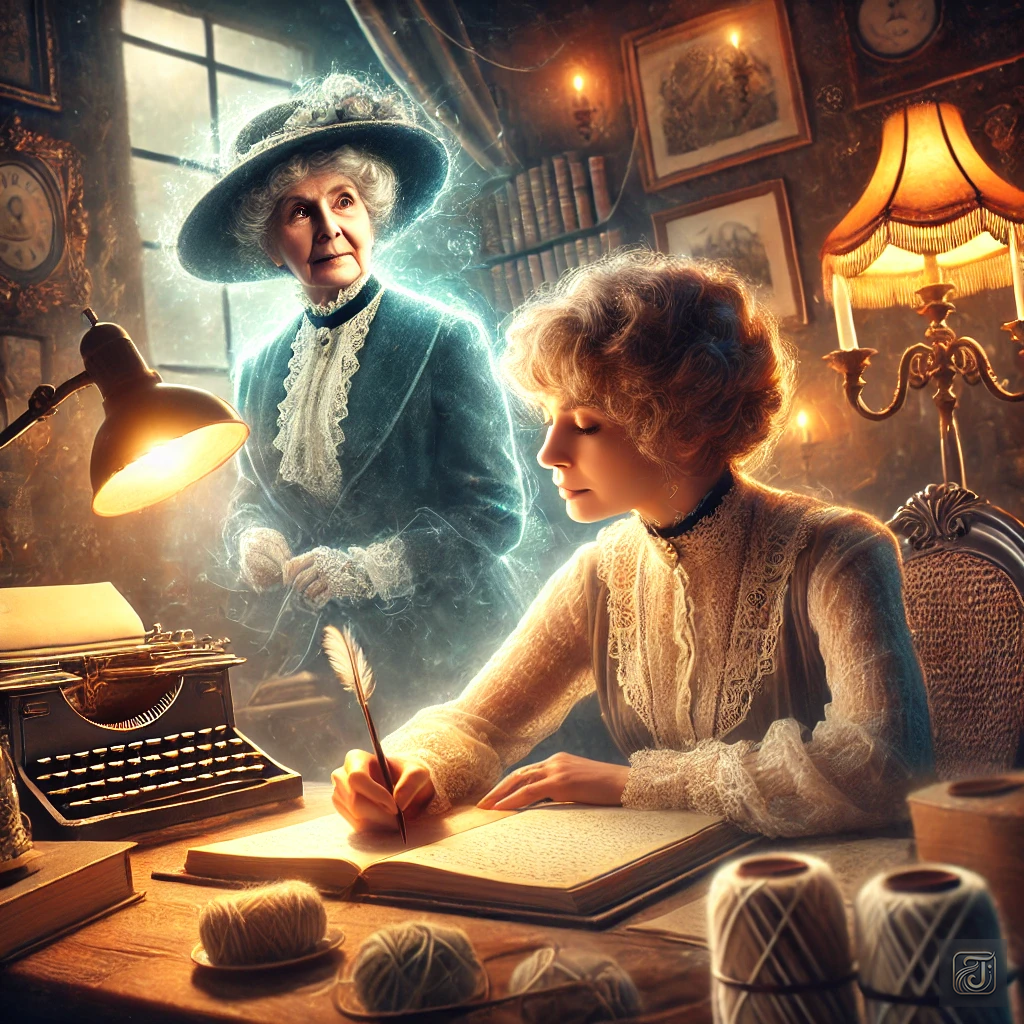

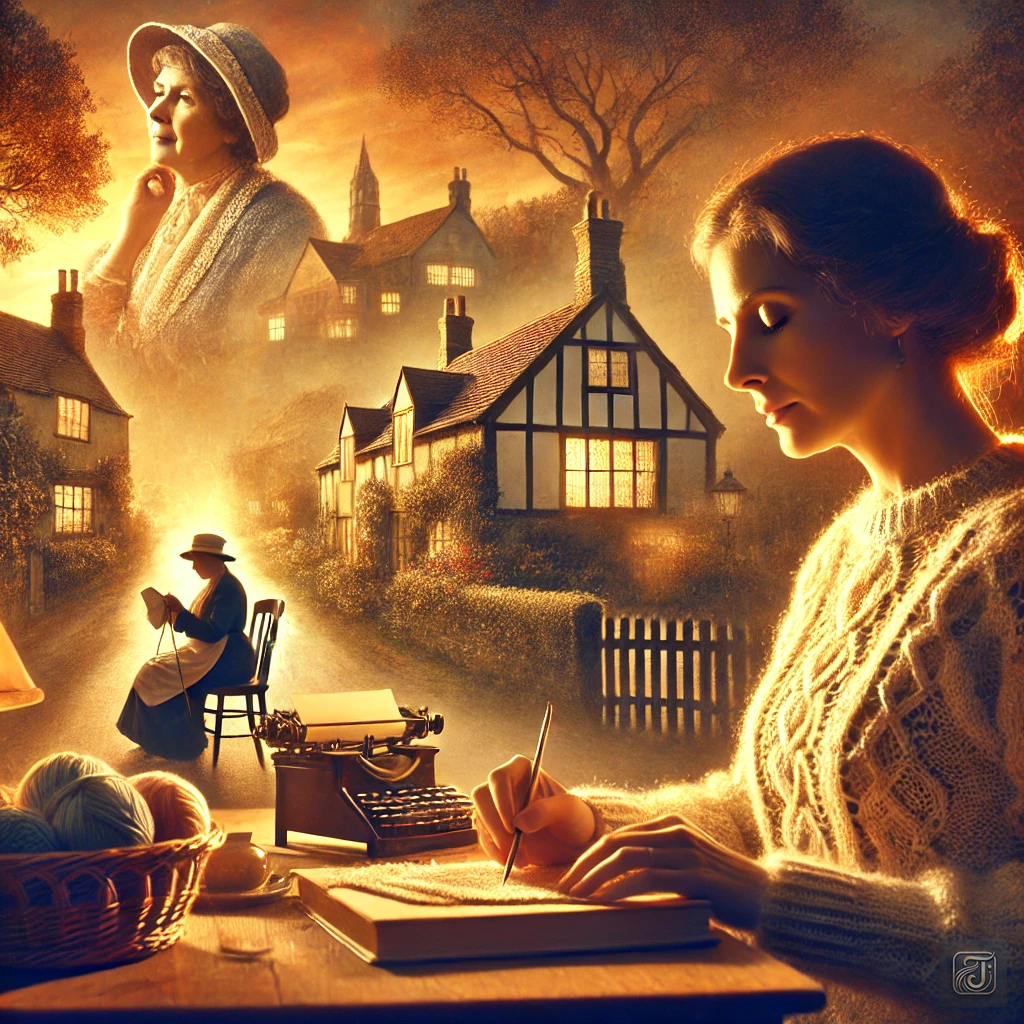


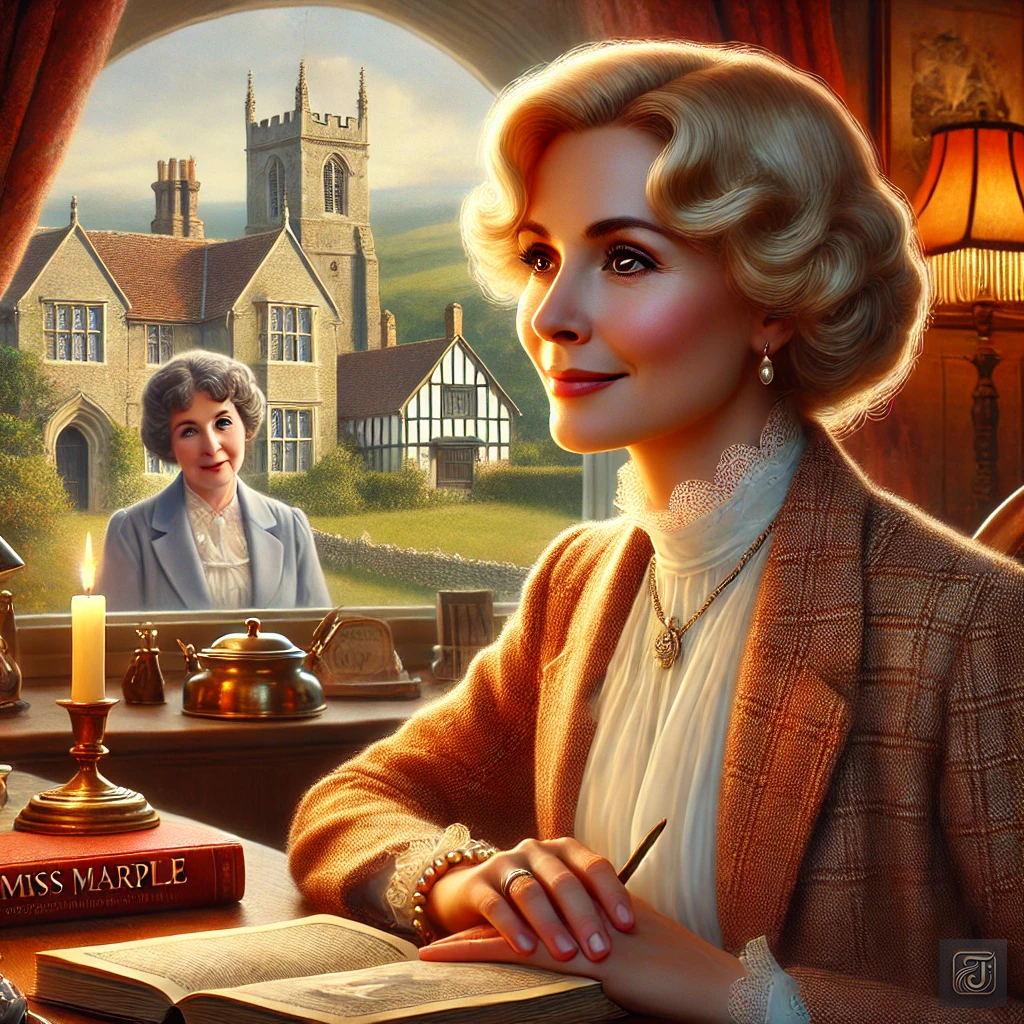


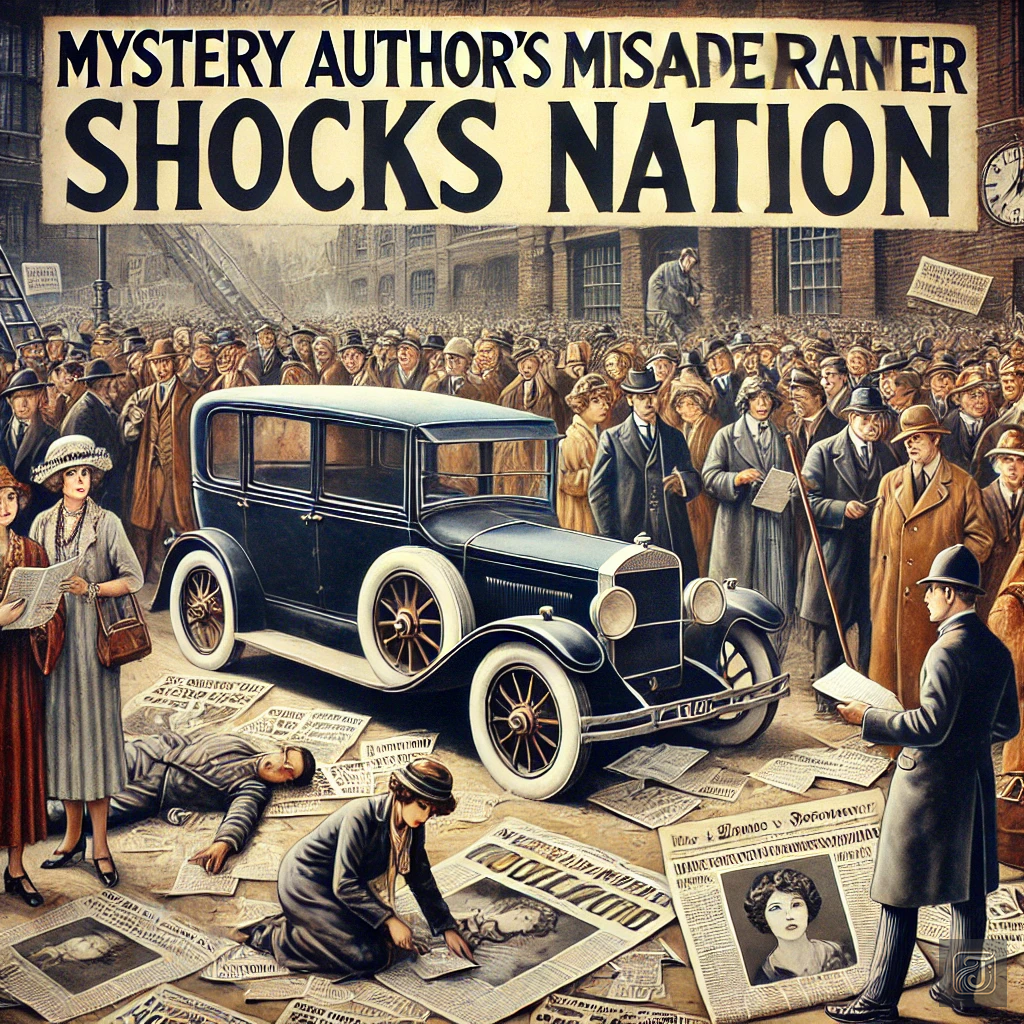


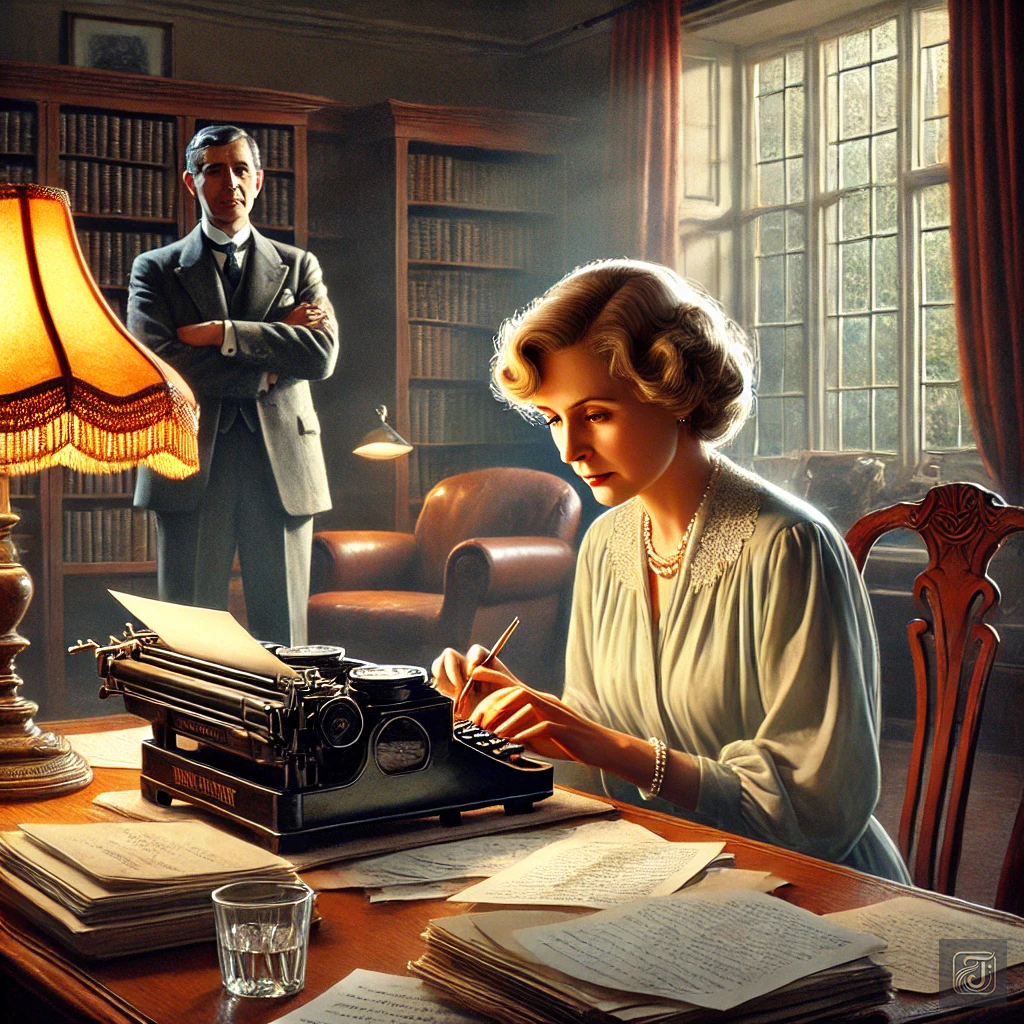
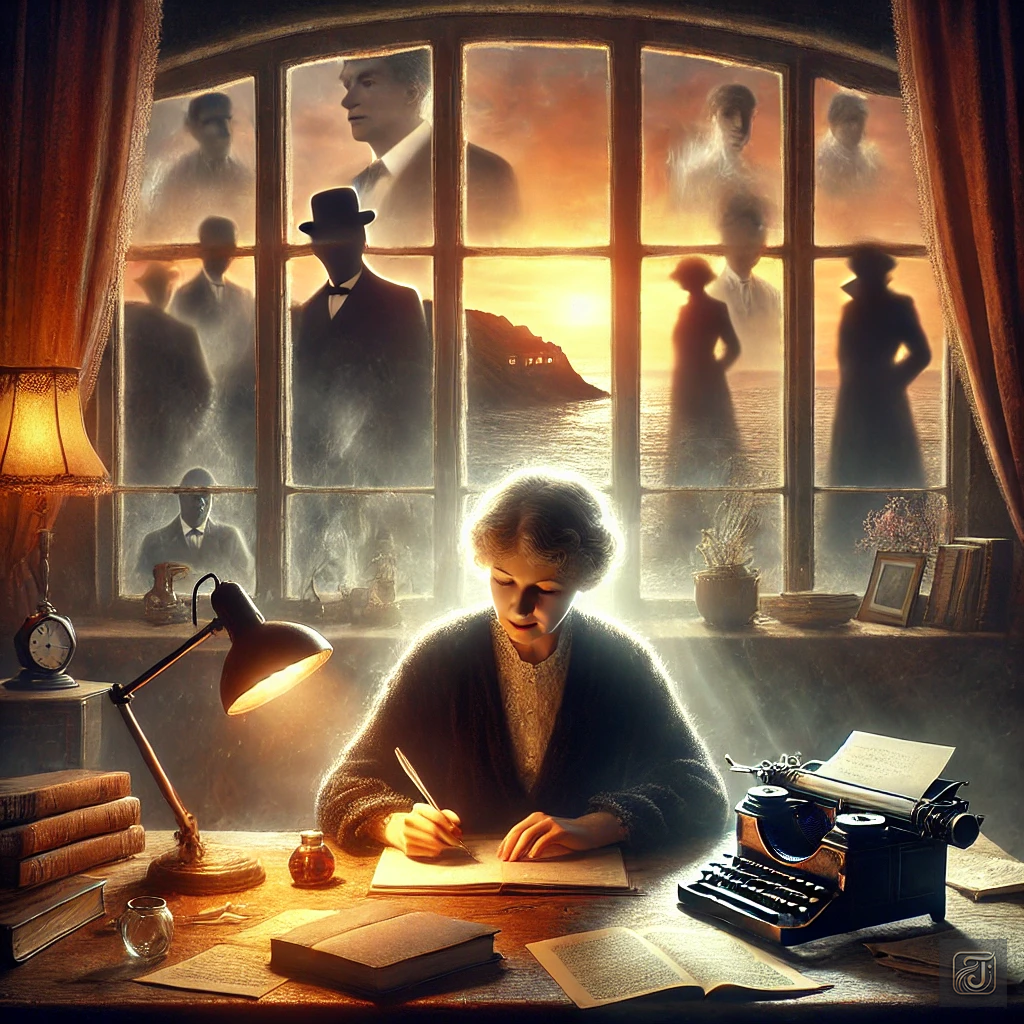



















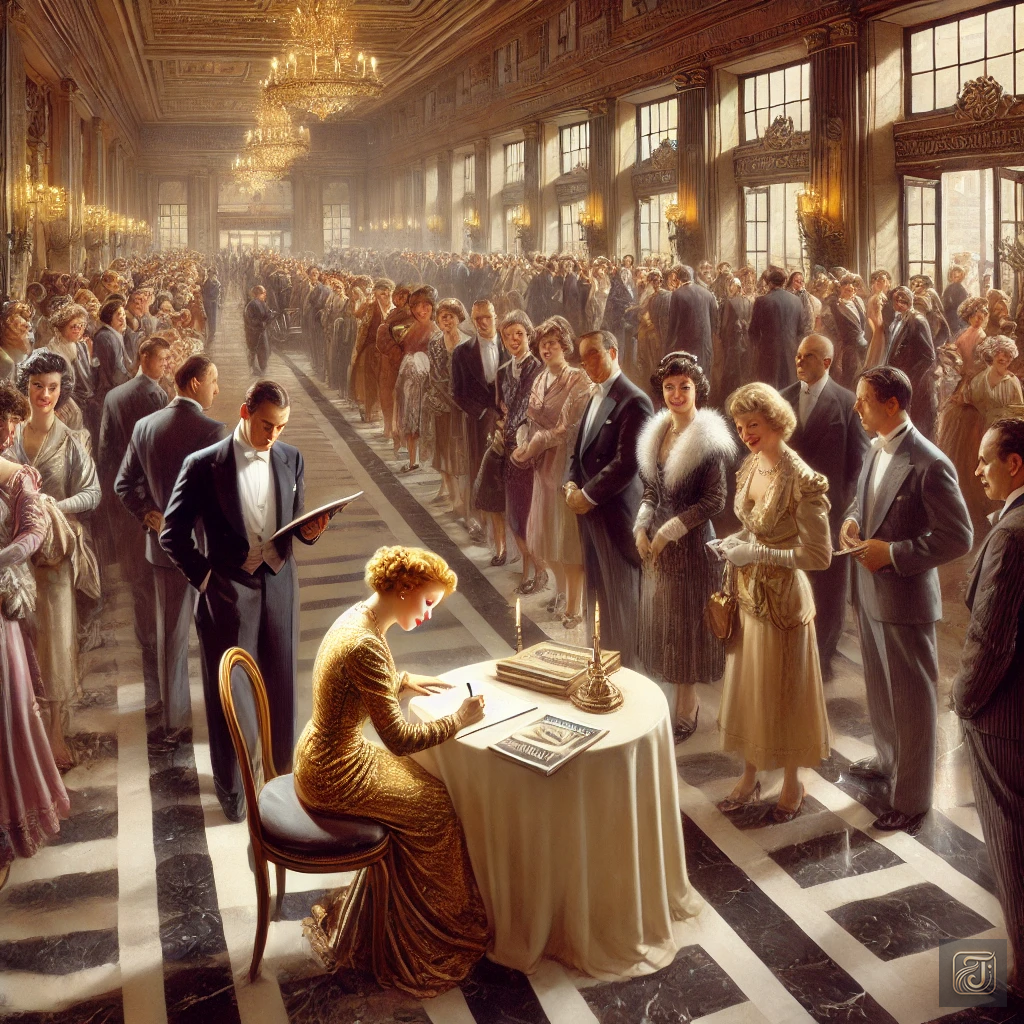


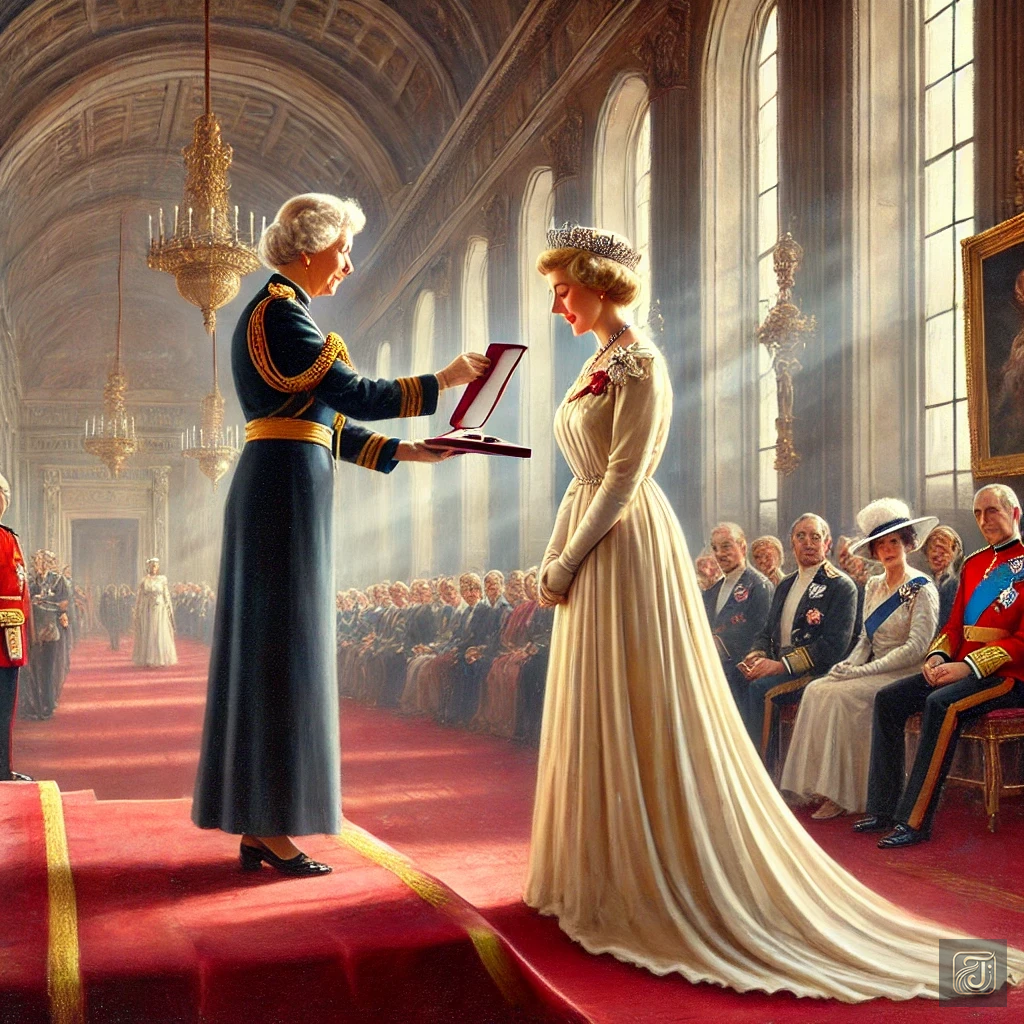

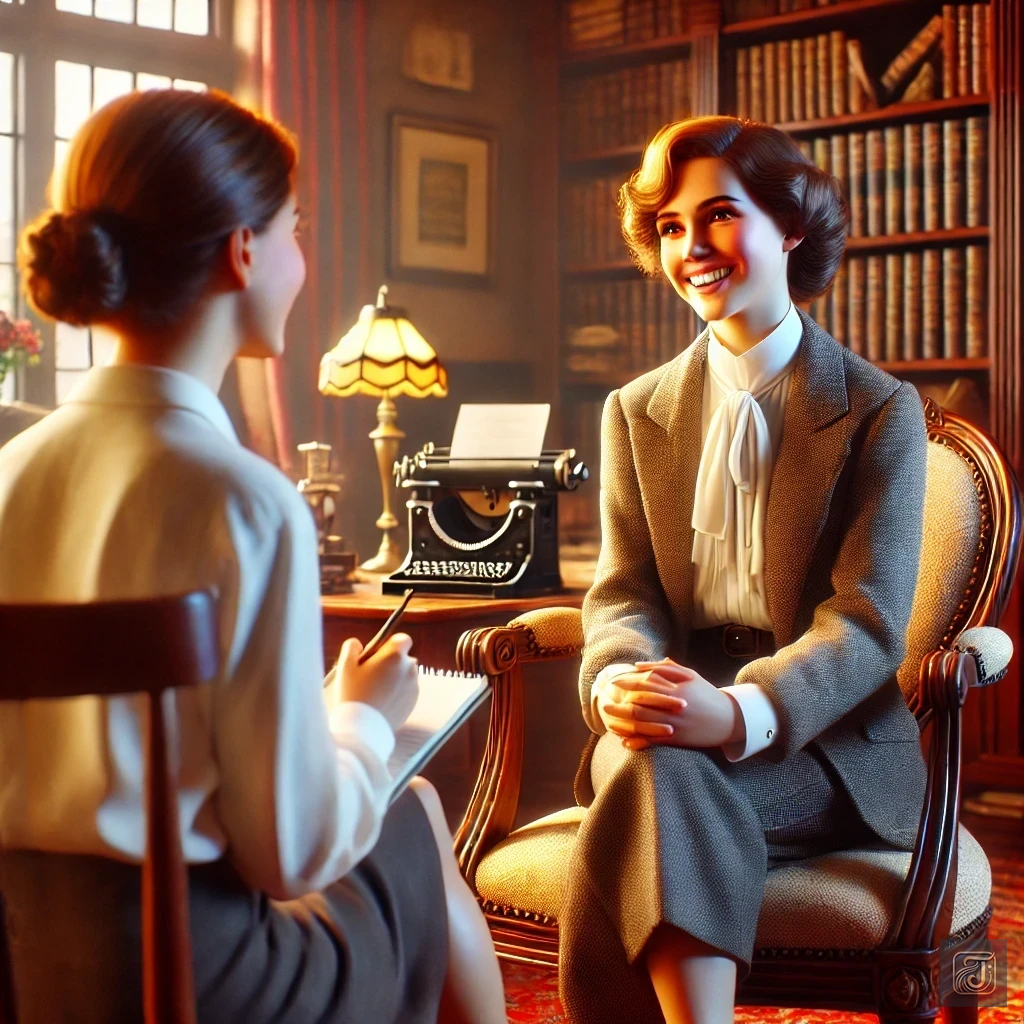
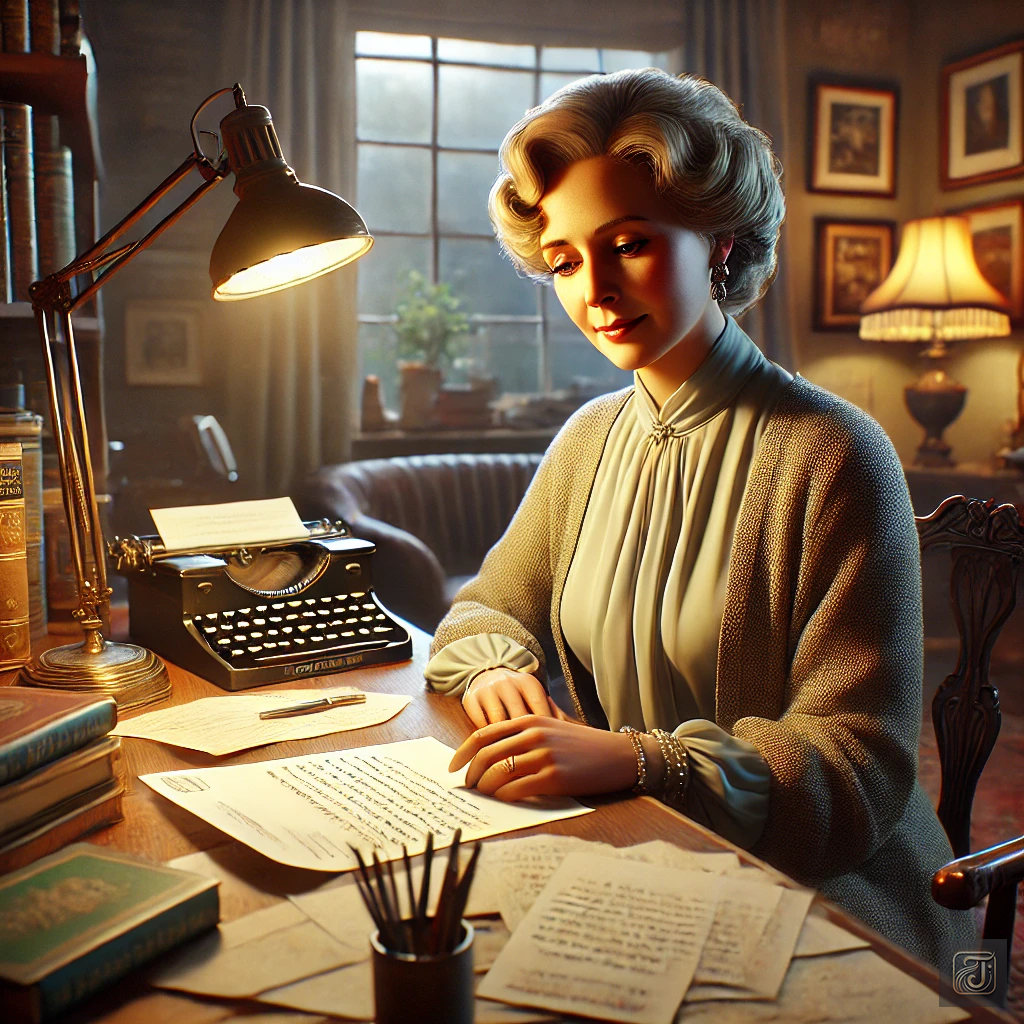
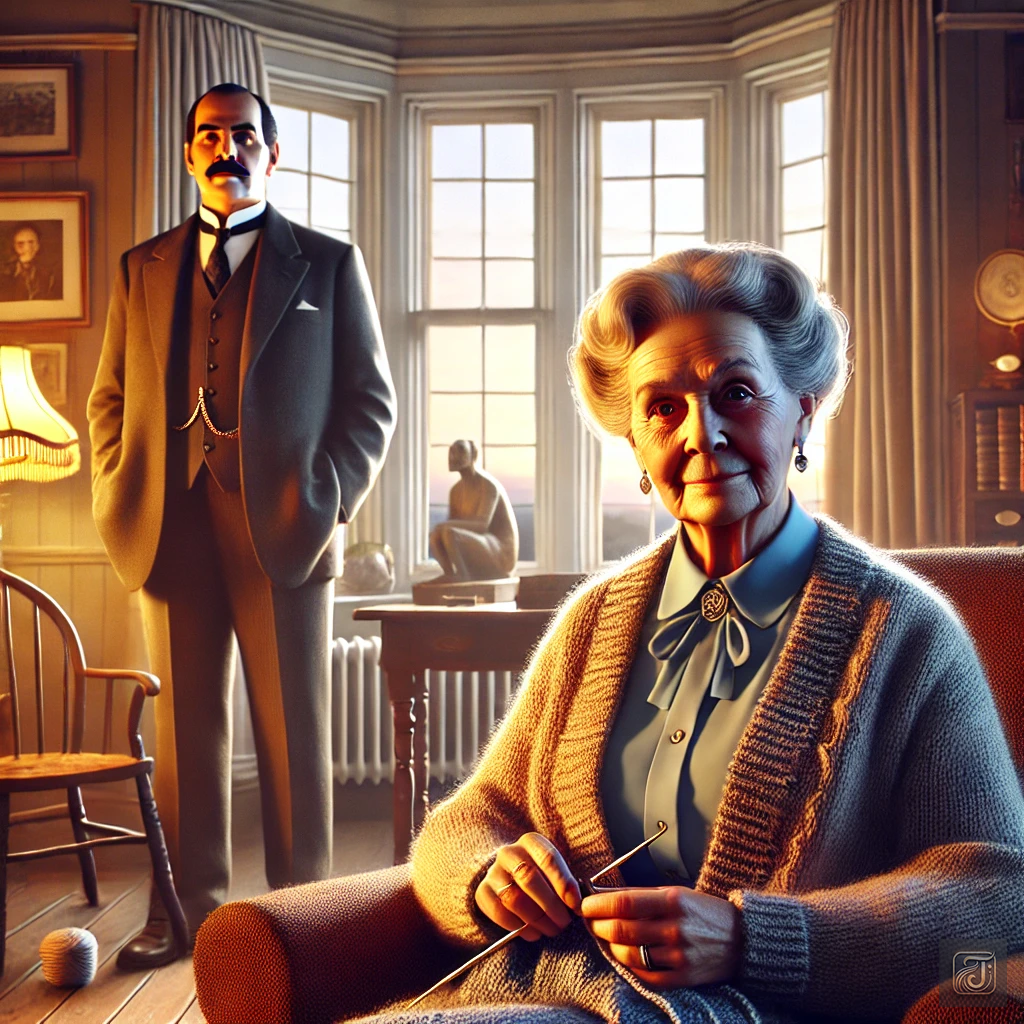
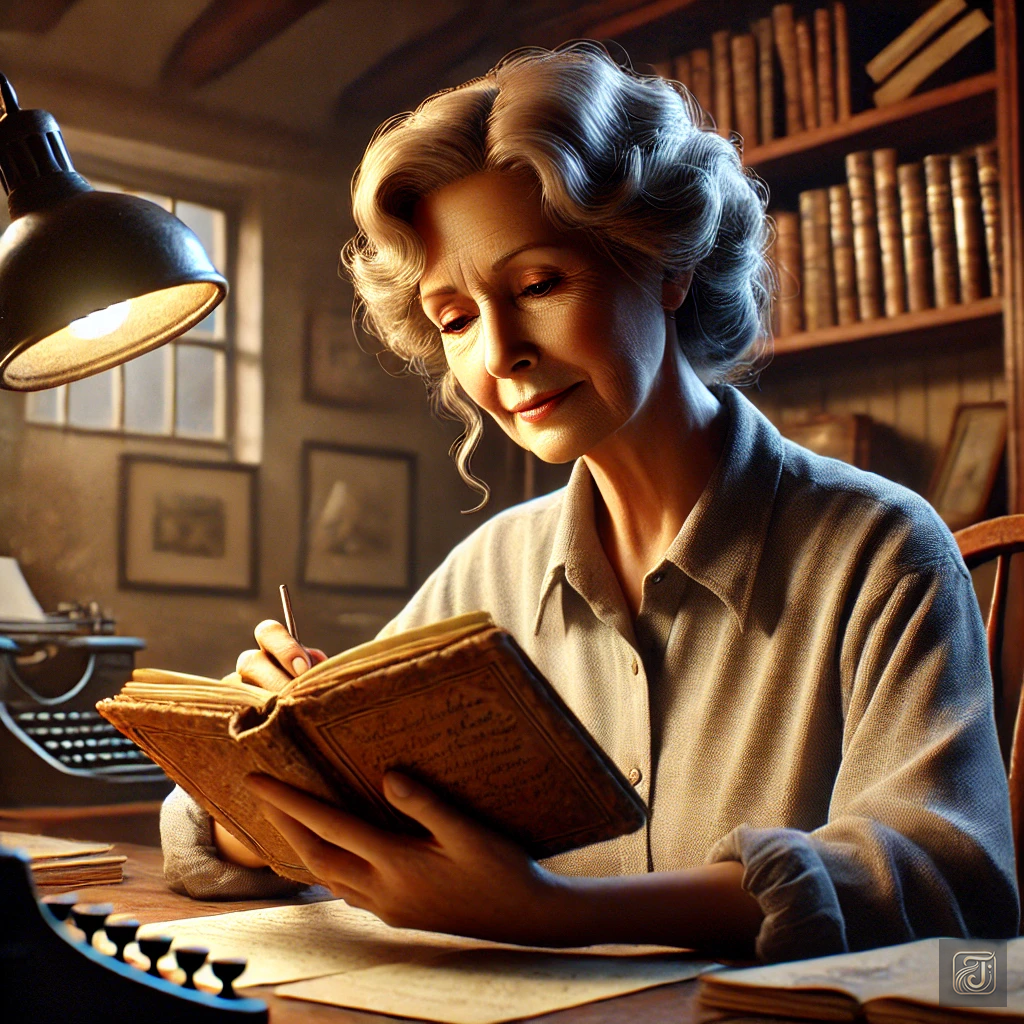
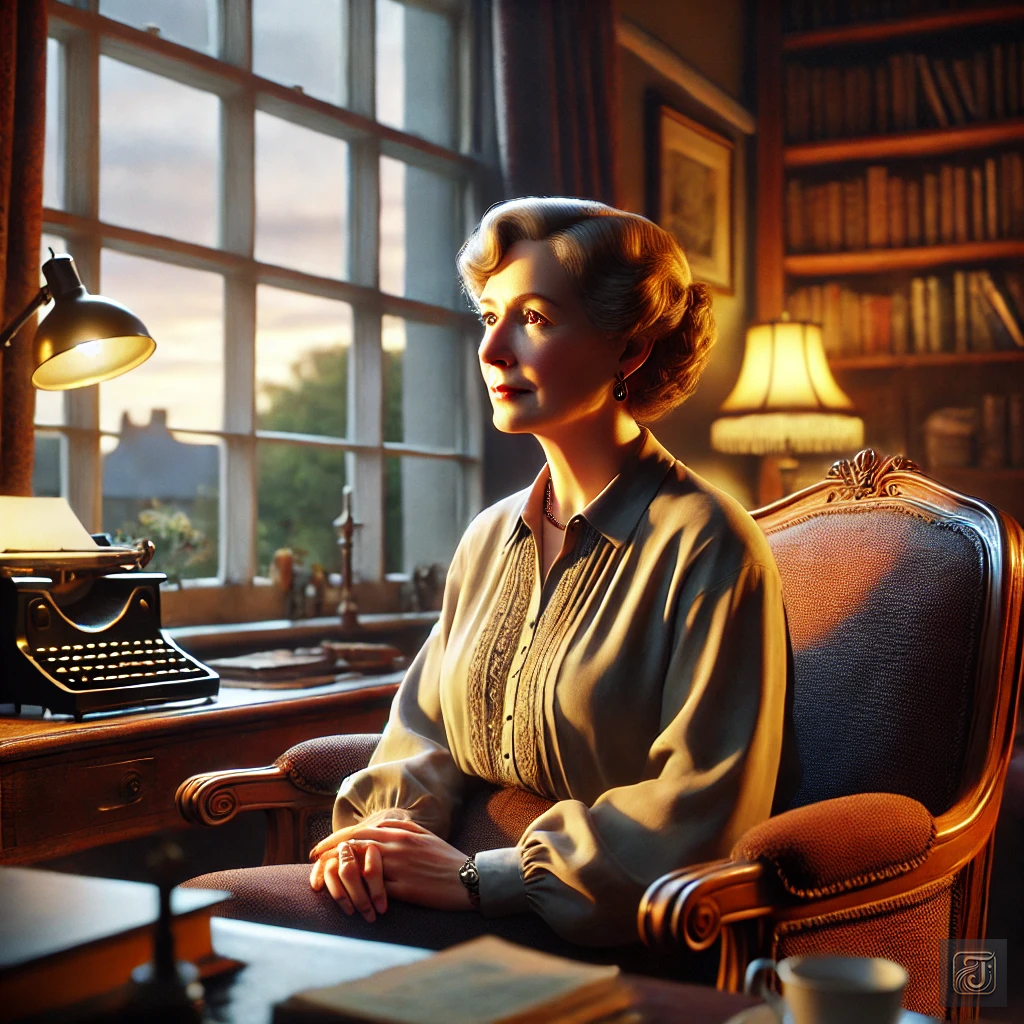
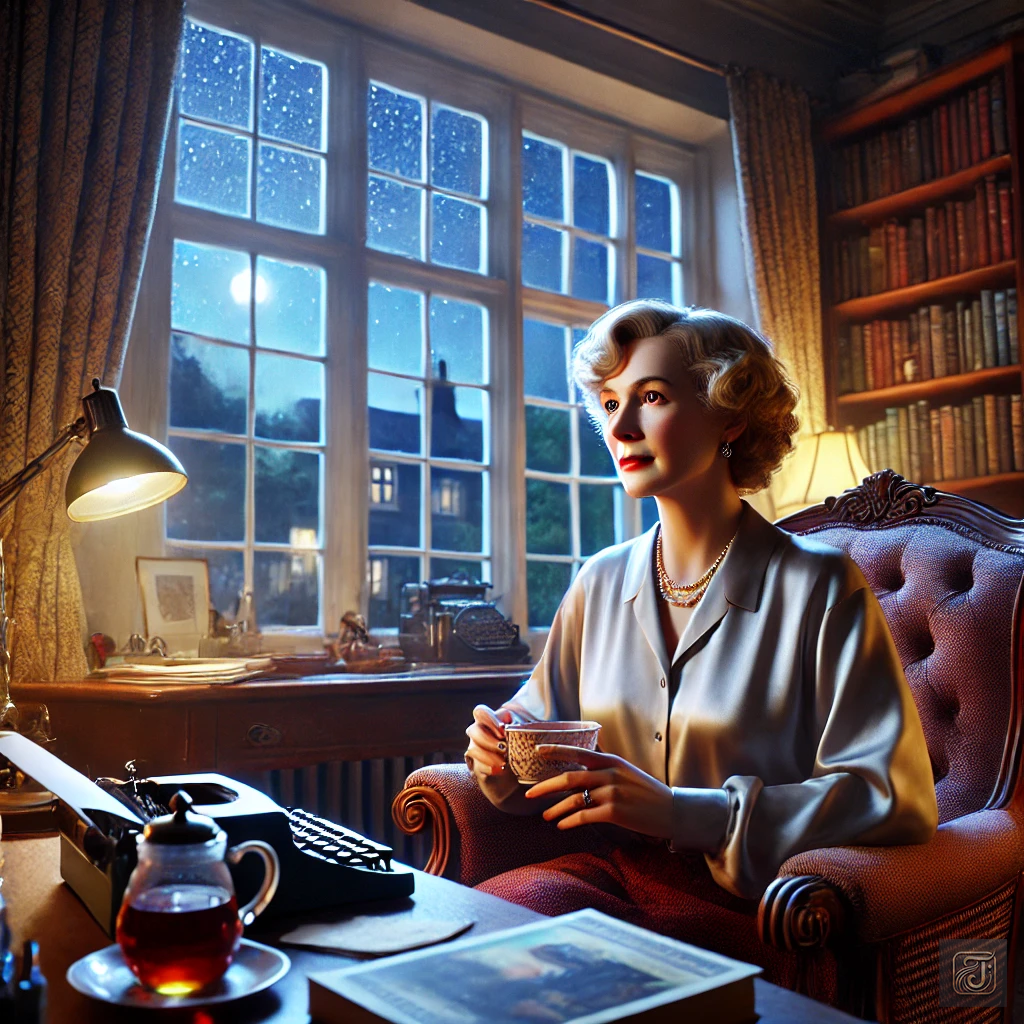
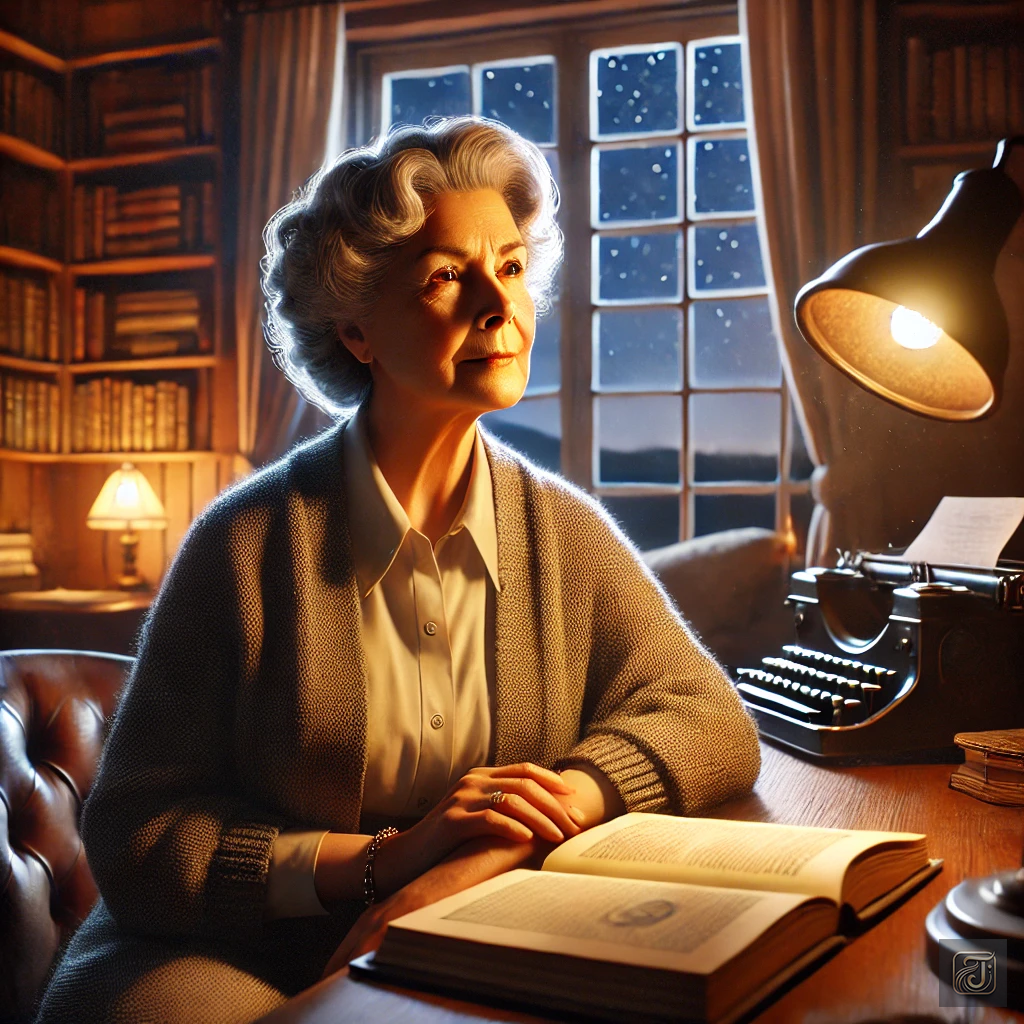
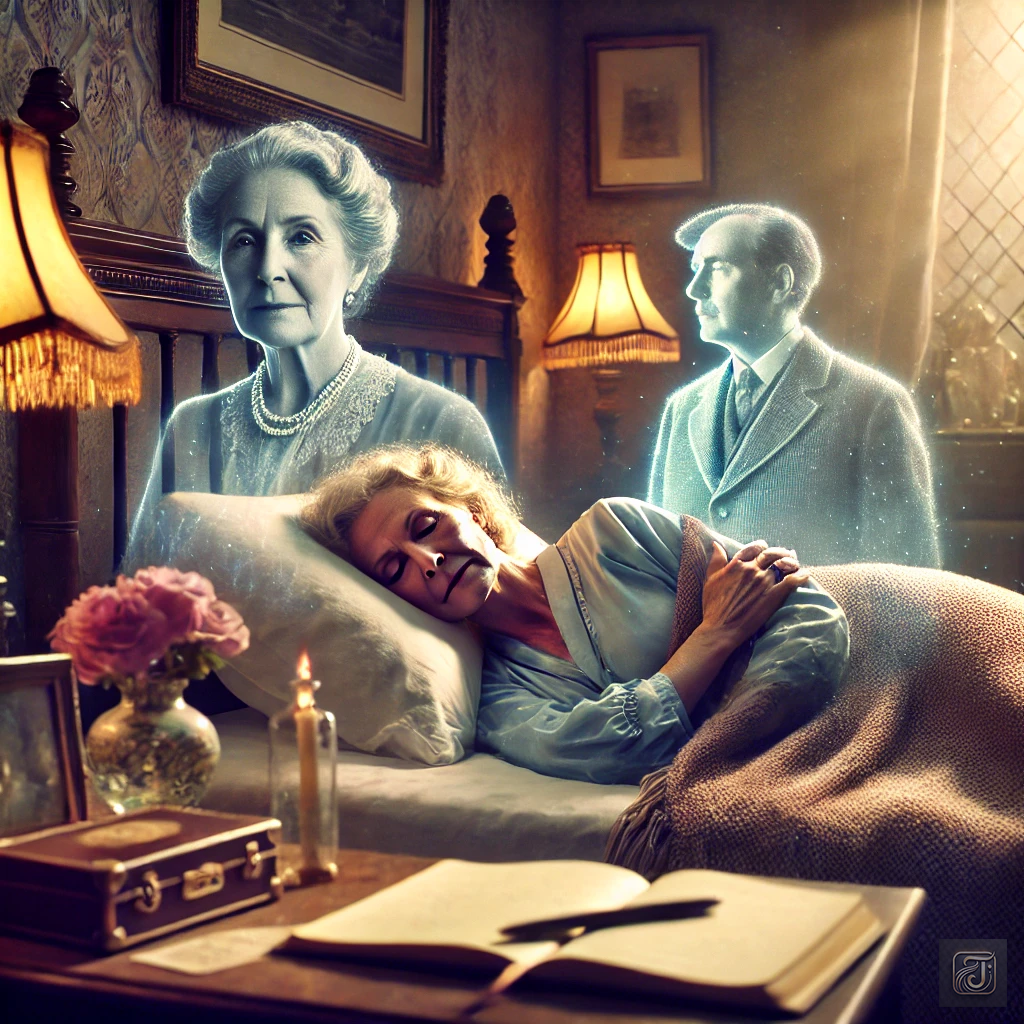








Comment